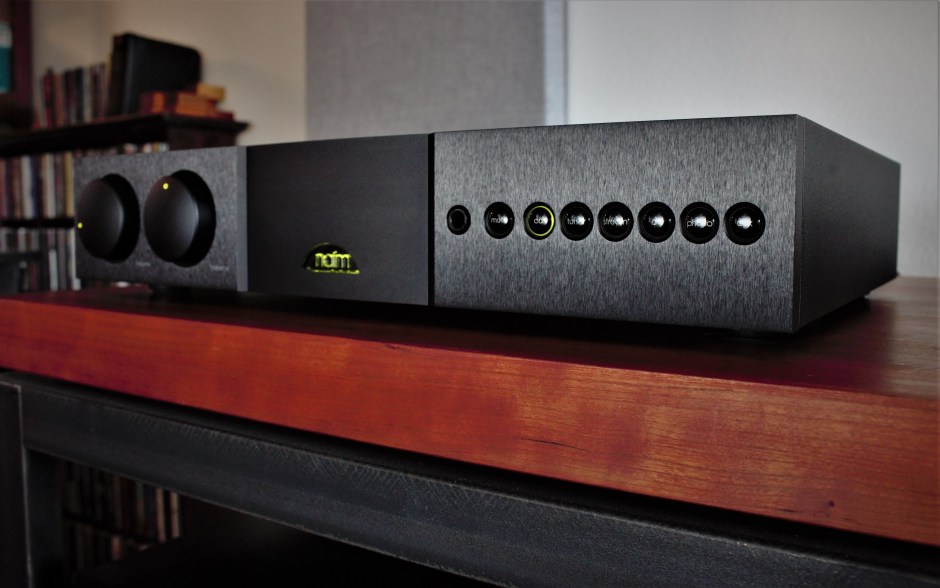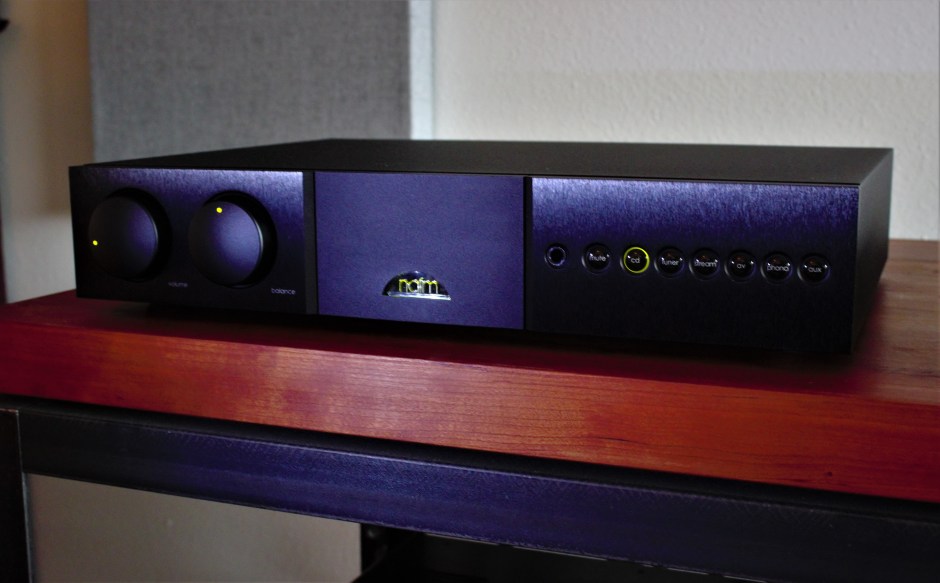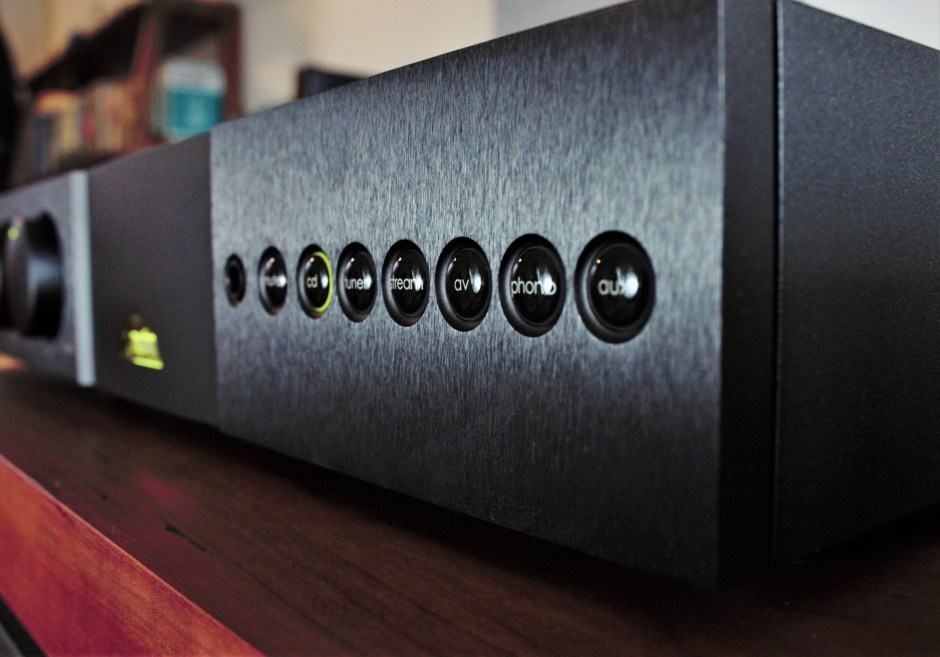The Naim SuperNAIT 3 integrated amplifier, above all, is about trying to reconnect with my past—at least a little bit.
Back in December I traveled down to Los Angeles for the first time in at least a couple of years, or at least pre-Covid. Whenever I go to back to Southern California I drive past the houses where I lived just to get that little rush of nostalgia, all those memories. As the years pile on, however, those memories become tarnished by suburban decay and smog and I can no longer look at those houses and point and say that I used to live there as a child. It seems improbable to me that I spent so many years inside of these buildings.
In 1991, I went from mid-fi separates from SAE and an AR ES-1 turntable and a pair of Snell Type Js to my first Brit-Fi system courtesy of Gene Rubin: a pair of Spendor S20s (an older version of the SP3/1), a Rega Planar 3 with Bias cartridge and one of my favorite little boxes of all time, the Naim NAIT 2 integrated amplifier. I’ve waxed rhapsodic about the NAIT 2 so many times, and I don’t want to rehash it here and propel this review into the realm of the novella. Quite simply, the Naim NAIT 2 completely transformed what I wanted from hi-fi, gently guiding me away from lots of unnecessary power and mid-fi features and little buttons on front panels and into an amplifier that only had 15-21 watts per channel and could be comfortably tucked under my arm and taken to faraway places.
For the first time in my life, I chose an amplifier because of the way it sounded. The watts didn’t matter, nor did vanishingly low levels of harmonic distortion. It just sounded open and transparent and so much better than what I had. More than any other single component, the Naim NAIT 2 is responsible for who I am as an audiophile today.
The current Naim SuperNAIT 3 integrated amplifier is, in many respects, that Naim NAIT 2 taken to the nth degree. The NAIT series obviously evolved over the years, appearing in a larger chassis, dropping the very good MM phono stage, adding other features along the way. Years after I owned the Naim NAIT 2 and foolishly traded it in, I couldn’t resist buying the early version of the Naim NAIT 5. The price was still more than fair, just a few more hundred than the $995 NAIT 2, and with 30 watts per channel it was far more friendly to speaker loads.
But the sound of the newer NAIT design wasn’t quite as illuminating as it was with my old friend. It was solid for the money, of course, but that tiny little NAIT 2 changed my audio world and this newer one was, well, competent. Good, even. But I don’t think I had it very long. I barely remember it.
Over the years the NAIT 5 became the NAIT 5i, and then the 5i (note italics) where it remains in the line-up today. Over the years Naim started introducing more upscale models in the NAIT line—the XS, the SuperNAIT and now the $5,699 Naim SuperNAIT 3. Over the years, I moved up in the Naim line and eventually wound up with separates and external power supplies like the Flatcap and the Hi-Cap. Then, I moved away from Brit-Fi into flea-powered SETs and high-efficiency speakers, and then I explored a thousand different things.
But I’m back. I’m here to check out the old neighborhood, and to answer the question, “Could I live here again, in this neighborhood?”
Inside the Naim SuperNAIT 3
The Naim SuperNAIT 3, in a nutshell, is an integrated amplifier with 80wpc at 8 ohms and 130wpc into 4 ohms, far more powerful than that NAIT 2. The back panel is crowded—not only do you get plenty of RCA inputs, you get specialized connections like a DIN for power amp in, a 24V socket for an outboard Naim phono stage, a USB port and line outputs that are both fixed and variable. The front panel won’t be surprising to anyone who has seen a NAIT up close—volume, balance, input selector buttons.
Best of all, you still get that comforting Naim green glow. That evoked a sense of nostalgia more than anything else.
The SuperNAIT 3 offers the following improvements over the last version—the power amplifier section has been upgraded and redesigned to offer a presentation with “greater pace and intimacy,” a class A preamplifier section that also doubles as a headphone amp, an Alps Blue Velvet balance control, a new ceramic heat sink that reduces capacitive coupling and, most notably, the inclusion—or return—of an MM phono stage.
My Naim NAIT 2 had an excellent MM phono stage, based on the simple and yet iconic Naim Stageline outboard phono pre, which was a great match with the Rega P3/Bias rig I had. That was the last NAIT that had an inboard phono stage, and now it has returned. Since I don’t have a strong need for just an MM phono stage, this isn’t as important to me as it once was, but fortunately I still have that Koetsu Stepup Transformer in the house so I could still use the phono stage in the Naim SuperNAIT 3. And I did.
In addition, I still had the Focal Clear MG headphones that I used for the Ideon and Ferrum reviews. Considering that Naim and Focal are now stablemates, the match was predictably excellent.
Set-Up
When you read my upcoming review of the Harbeth Compact 7ES-3 XD loudspeakers, you’ll know that I was lucky enough to create that legendary synergy with the Naim SuperNAIT 3. That combination was employed for a majority of the time I had the SuperNAIT.
In addition, the Naim SuperNAIT was paired with the Fern and Roby Raven III loudspeakers, which are very sensitive and probably would have loved the Naim NAIT 2. (Man, I really need to find a used NAIT 2 to satisfy all these burning questions that emerged during the review process.) I also used the fabulous new Nola Champ3 loudspeakers, which are making a serious push toward being one of my favorite pair of transducers for under $10K/pair.
I did have one specific issue with the Naim SuperNAIT3—I forgot that most British integrated amplifiers and preamplifiers have those Euro-nanny jacks for speakers that require banana plugs. I’ve been using spades for so long that I forgot how useful and convenient banana plugs can be, so I ordered up a pair of AudioQuest Rocket 33s so that I could have a solid-sounding workhouse cable as part of my “tool kit.” For the price, these might be my favorite at their very reasonable price point, although once or twice I thought about grabbing an old pair of Naim speaker cables—which were stiff and ugly and yet still did a fine job. I think I bought a pair of those twice. They’re still around here somewhere.
Naim SuperNAIT 3 Sound
Back in the early ‘90s, when I bought that Naim NAIT 2, Naim was known for being an idiosyncratic company that made lots of “rules” for owners of their products. First of all, your cables needed to be Naim-approved, which at the time meant mostly Naim and a few others like The Chord Company, not to be confused with Chord.
In addition, Naim was also considered to have a sound that was distinctive—the original and iconic Naim NAP250 power amplifier, along with Linn turntables, practically defined the idea of pace, rhythm and timing (also known as PRaT). What that meant, at least back in the ‘90s, was that Naim amplification focused on playing the notes right, which meant a certain tonality that focused on the timing of the music. It was an excellent sound to me when I first heard it, although I’ve always felt that PRaT came at the expense of imaging and soundstaging. Music sounded beefy, powerful, chunky, emotionally direct.
The Naim SuperNAIT 3, however, has a different and more contemporary sound. More than once I thought maybe PRaT was a thing of the past, and that Naim has focused less on being iconoclastic and more tuned into a more engaging and universal sound. This isn’t so different anymore, I thought, those feelings of nostalgia elbowing me in the side and gently suggesting that this was a new Naim for the 21st century and I should stop living in the past. Fair enough, I thought.
While the Naim SuperNAIT 3 didn’t veer away from ultimate accuracy and neutrality—at first the sound reminded of many high-quality integrated amplifiers I’ve had in for review in the last few years. Soundstaging and imaging, for example, were now fully realized with a delicacy that hinted about the new direction Naim has taken in the years since founder Julian Vereker passed away—more than twenty years ago.
I felt the same thing when I borrowed a Naim Uniti Atom a few years ago. I was impressed by everything with that all-in-one—the ease in which it streamed and integrated other digital sources, the compact dimensions, and the amazing array of features for the money. Grover Neville thought pretty much the same thing when he recently reviewed the Naim Uniti Nova. After spending time with the Atom, I immediately though I could easily live with one of the Uniti models—probably the ones that contain a CD transport because I feel that Naim CD players had incredible phenolic resin “swing-out tray” that was completely manual.
That feeling I had with the Naim Uniti Atom, that ultimate sound quality has actually moved up a couple of notches so it no longer felt that novel, returned with the Naim SuperNAIT 3. This is a neutral, quiet and composed integrated amplifier, full of both detail and resolve and yet still maintaining a modicum of Brit-Fi refinement that still attracts my interest to this day.
Conclusion
As you can see, the Naim SuperNAIT 3 wasn’t as nostalgic of an experience as I thought. Other than the ubiquitous green glow that unexpectedly warmed the cockles of my heart, I wasn’t plunged back into the early ‘90s, living the life of a Naim guy, which meant a lot more thirty years ago than it does now. I haven’t heard a vintage piece of Naim gear since I last owned them, so I’m not even sure if I still find that sound to my liking.
The Naim SuperNAIT 3 is, however, a thoroughly modern integrated amplifier with lots of useful features, plenty of cutting-edge technology (especially with the redesigning of the voltage gain stage which results in a more straightforward circuitry with less parts), and an overall sound quality that is closer to my tastes in 2022. Best of all, the SuperNAIT 3 is less than $6K, and it easily rivals most of the integrated amplifiers I’ve heard that are closer to five figures.
When you read my review of the Harbeths, you’ll see where I proclaim that the combination of the two, for a little more than $11K, would probably be my instant choice if I was in the market. I stand by that, which makes me wonder if I’m still a Naim guy, and whether I should spend more time catching up with old friends—which is exactly what I want to do.

















2 Trackbacks / Pingbacks
Comments are closed.